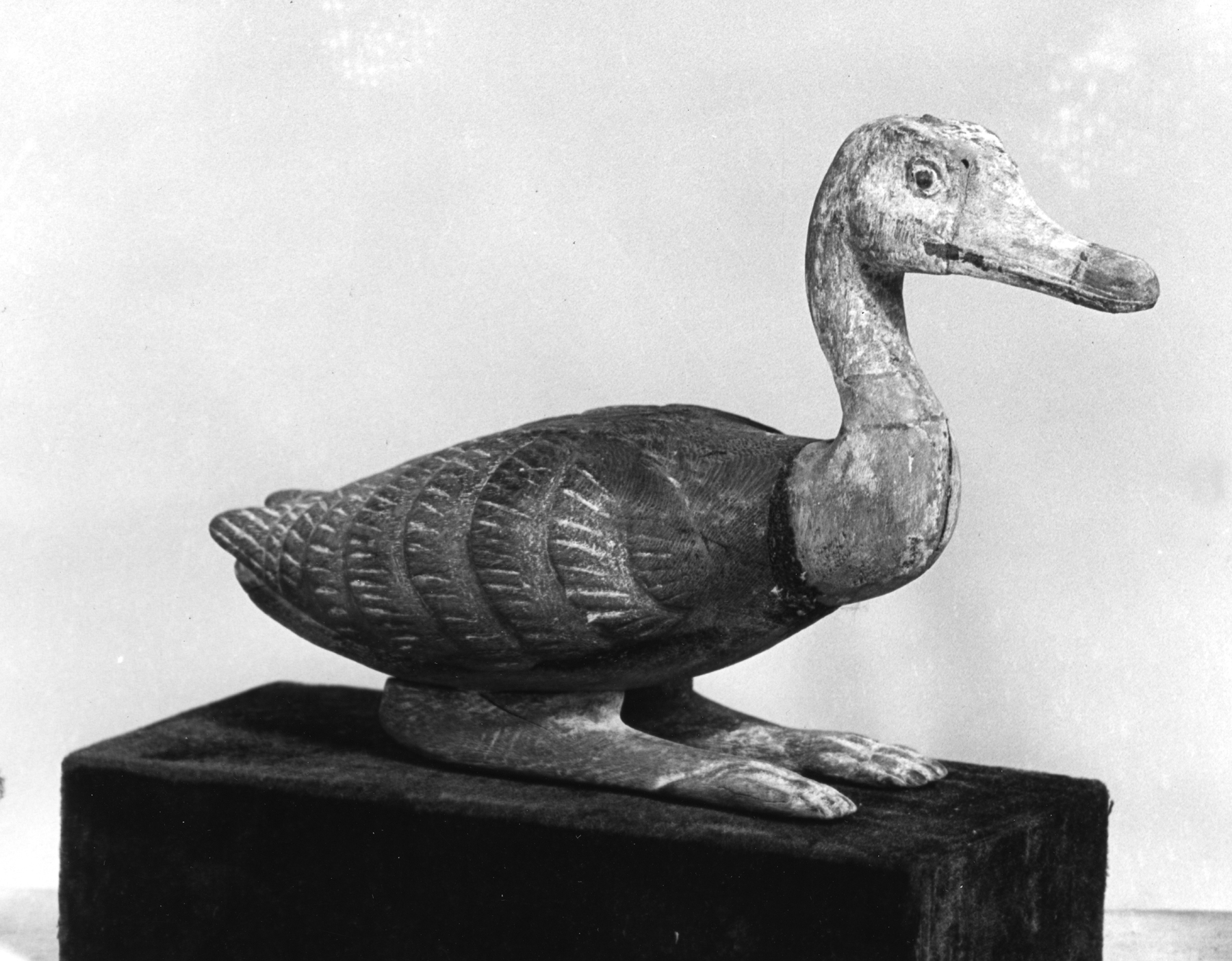Duck
(Ancient Egypt and Nubia )
This duck figurine has wing feathers and eyes carved with a painted neck and head. There is a wood pin in the top of its head.
Geese, ducks, and other fowl were common in ancient Egypt. They were part of the daily diet and were used as offerings for deities and the deceased. Fishing and fowling were popular motifs in tomb and temple decoration. This colorful duck is unusual in its size and style, and it is possible that it was re-carved later. The authenticity of this piece has been questioned.
Provenance
Provenance (from the French provenir, 'to come from/forth') is the chronology of the ownership, custody, or location of a historical object. Learn more about provenance at the Walters.
[Said to have been found at Meidoun]; Navare, Paris, [date and mode of acquisition unknown]; Henry Walters, Baltimore, 1929, by purchase; Walters Art Museum, 1931, by bequest.
Exhibitions
| 2004-2005 | Carved for Immortality. The Walters Art Museum, Baltimore. |
Conservation
| Date | Description | Narrative |
|---|---|---|
| Examination | examined for condition |
Geographies
Egypt (Place of Origin)
Measurements
H: 5 9/16 x W: 6 15/16 in. (14.2 x 17.7 cm)
Credit Line
Acquired by Henry Walters, 1929
Location in Museum
Not on view
Accession Number
In libraries, galleries, museums, and archives, an accession number is a unique identifier assigned to each object in the collection.
In libraries, galleries, museums, and archives, an accession number is a unique identifier assigned to each object in the collection.
22.1


